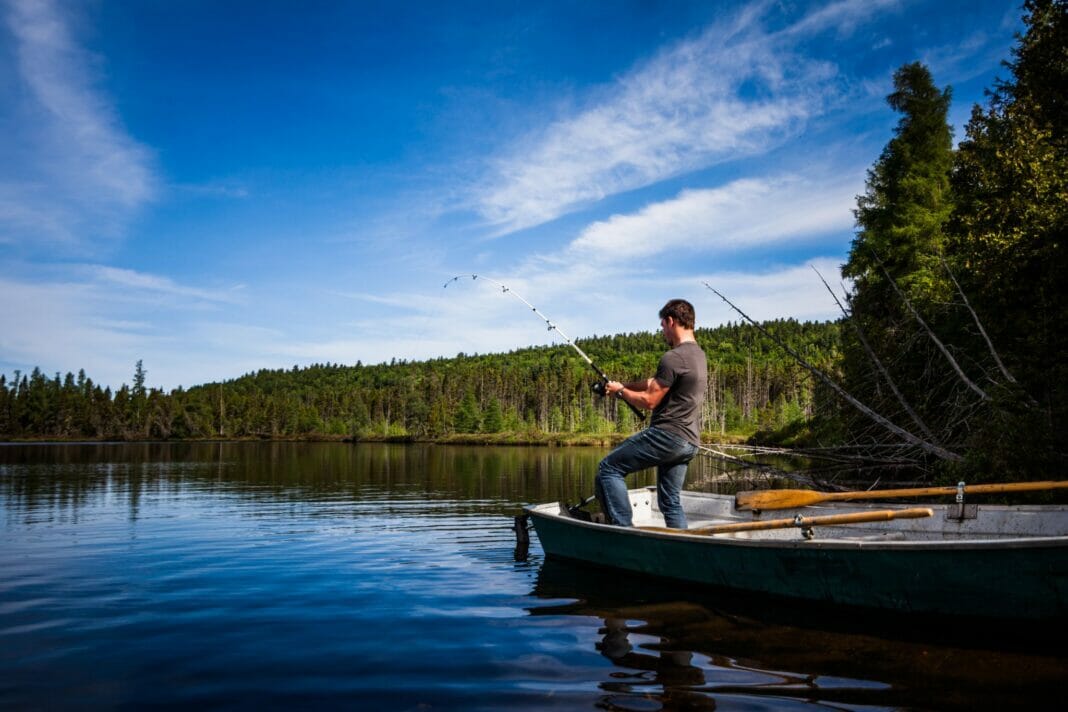Trout fishing is a popular and enjoyable pastime, with the excitement of waiting for the lure to be taken by a fish that is unmatched. Trout can be found in freshwater rivers, lakes, and streams, providing countless locations for keen anglers to try their luck. To help you get started or to improve your trout fishing game, here are some helpful tips and guidelines.
Choose the Right Equipment
Rods and Reels
Choosing a suitable rod and reel for trout fishing is essential. A lightweight spinning rod around 5-6 feet long is ideal for targeting smaller trout, providing sensitivity and allowing for accurate casting. For larger trout, a 6-7 foot rod with medium power is a good choice. A spinning reel with smooth drag and capable of handling 4-8 pound test line is recommended for trout fishing.
Fishing Line
The use of a monofilament or fluorocarbon line is recommended for trout fishing. Monofilament line is affordable, reliable, and provides improved stretch and shock absorption, whereas, fluorocarbon is almost invisible underwater and is more resistant to abrasion. For smaller trout, a 4-pound test line is usually sufficient, while for larger trout, a 6-8 pound test line is appropriate.
Hooks and Lures
Trout can be caught using a variety of lures and baits, including artificial lures such as spinnerbaits, jigs, and crankbaits. Live bait such as worms, minnows, or mealworms can also prove effective in attracting trout. When fishing with bait, a size 4-10 single hook is a good choice, while treble hooks should be used with artificial lures.
Understand Trout Behavior
To increase your chances of success when trout fishing, it’s important to understand the behavior and habitats of trout.
Feeding Habits
Trout are opportunistic feeders and will usually feed on what is most readily available in their environment. Their diet typically consists of insects, crustaceans, and smaller fish. Trout will also feed on terrestrials, such as grasshoppers and ants that find their way into the water. To increase your chances of success, try to imitate the trout’s natural food sources with your choice of bait or lure.
Trout Habitats
Trout can typically be found in cool, clear, and oxygen-rich waters. They will often seek out areas with structure, such as fallen trees, rock formations, or underwater vegetation, as these provide shelter and cover for them to hide from predators. Trout are also often found in areas with moving water, such as riffles, pools, and channels, where there is a mix of both fast and slow currents.
Understand the Best Times and Conditions to Fish for Trout
Trout are more active at certain times of the day and under specific weather conditions, which can affect their feeding patterns.
Time of Day
The best time of day to fish for trout is typically in the early morning and late afternoon, as this is when they are most actively feeding. During these times, trout will often venture into shallower waters to search for food, making them more accessible to anglers.
Weather Conditions
Trout fishing can be affected by weather conditions, with overcast and cloudy days proving most successful for anglers. On days with harsh sunlight, trout will often be found in deeper and darker waters, making them more challenging to target. Rain can also be beneficial for trout fishing, as it can dislodge terrestrial insects, providing a food source for trout.
Employ the Right Techniques
Having the right equipment and understanding trout behavior is crucial to success, but it’s equally important to employ the correct fishing techniques. Here are a few techniques that can help you to catch trout more effectively:
Drift Fishing
Drift fishing involves casting your bait or lure upstream and allowing it to drift naturally with the current. This allows you to cover more water and offers a natural presentation of your bait or lure to the trout.
Suspended Fishing
Utilizing a bobber or float allows you to suspend your bait at a specific depth. This can be particularly effective when targeting trout in deeper water or when trying to keep your bait in a specific location for a longer period.
Fly Fishing
Fly fishing is a popular technique used for targeting trout, especially in streams and rivers. The idea is to cast an artificial fly lure, which imitates insects or other food sources, onto the water to entice trout to strike.
Retrieve Techniques
When using artificial lures for trout, the speed and cadence of the retrieve can have a significant impact on your success. The key is to experiment with different retrieve speeds and techniques, such as varying the speed, pause-and-retrieve or twitch-and-pause.
Trout fishing can be an enjoyable and rewarding experience, providing hours of relaxation and excitement for both beginners and experienced anglers. By choosing the right equipment, understanding trout behavior, and employing effective techniques, you can increase your chances of a successful day on the water.


